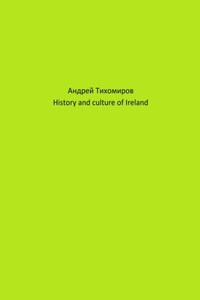History and culture of Ireland
Автор книги - Андрей Тихомиров. Произведение относится к жанрам детская познавательная и развивающая литература, языкознание, историческая литература. Оно опубликовано в 2023 году. Книге не присвоен международный стандартный книжный номер.
A brief overview of the history and culture of the Irish people. Ireland in ancient times was inhabited by Iberian (Ibero-Caucasian peoples) and Celtic (Indo-Europeans) tribes. The origins of the art of the inhabitants of the island go back to the culture of the Celtic tribes who inhabited the territory in ancient times. In the early period, stone, ceramic, metal products decorated with a clear geometric ornament (spirals, curls) were created, this goes back to the culture of the ancient Indo-Europeans, created in the Southern Urals.










